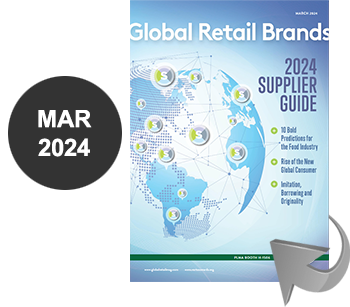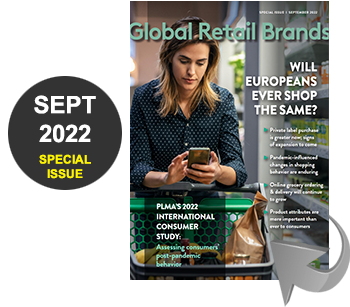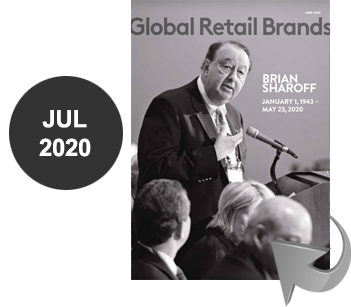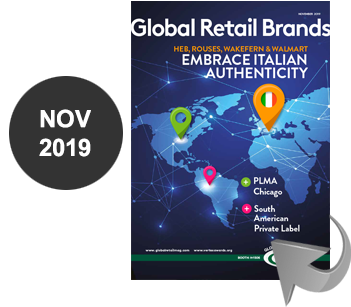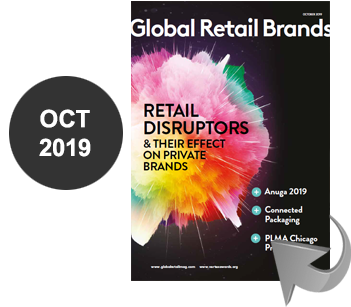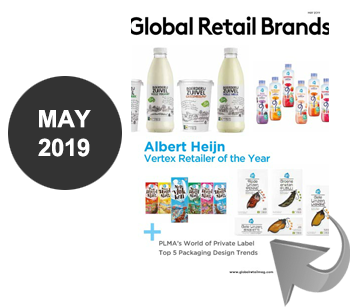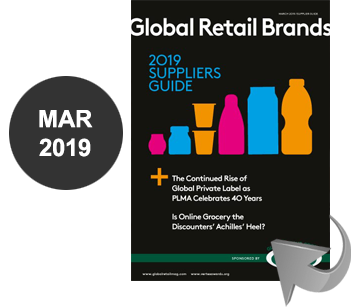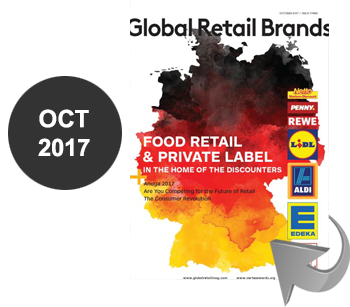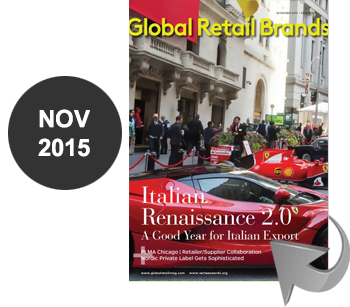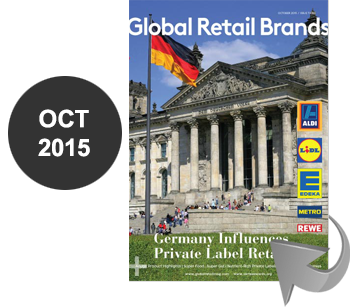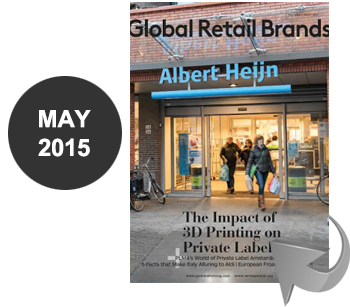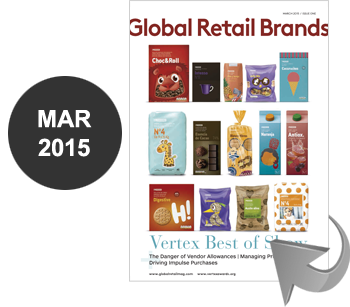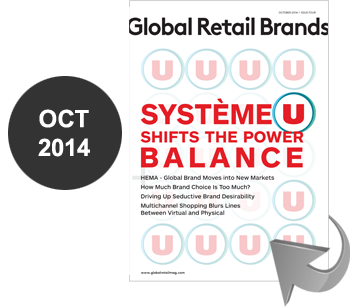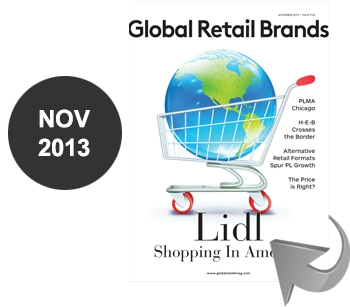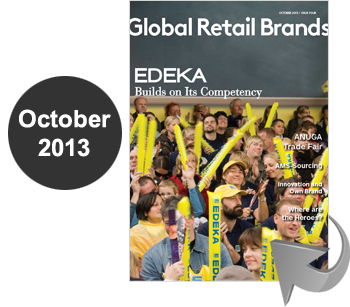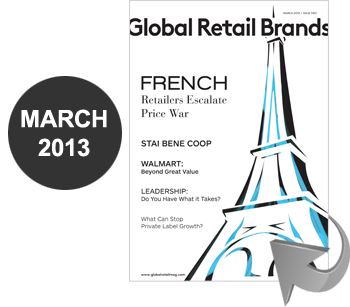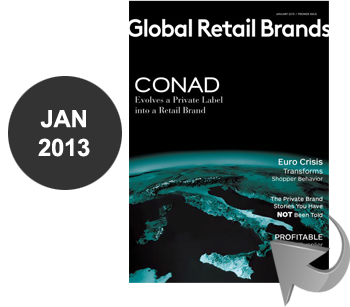
By / David Merrefield
There are few issues in the supplierretailer continuum that are so fraught with both controversy and opportunity as collaboration.
Just about everyone agrees that robust collaboration would heap great benefits on suppliers and retailers alike. Yet, for reasons both new and historic, collaboration doesn’t ever achieve much but a modest foothold in the scheme of things.
Some of the new barriers to collaboration center on disruptive forces that are changing the face of retail. For instance, Walmart has been urging suppliers to provide more costly product to sell online, in a bid to increase the economic productivity of delivery costs, and to provide less expensive items for sale in stores. The retailer has also imposed added fees, such as those for untimely deliveries.
Amazon’s Whole Foods unit is shifting to a form of just-in-time product deliveries to stores in an attempt to reduce costly backstage4 store inventory. It too has imposed new fees, such as charging suppliers or brokers for in-store customer-facing demonstrations.
None of these activities do anything to win the type of trust that underlies collaboration.
In keeping with all that, we’ve provided a series of articles about collaboration from a historical and contemporary perspective, along with a prescription for curing collaboration’s ills.
Collaboration Challenged In The Branded World

Collaboration is an industry term that can’t be mentioned without arousing much controversy. Everyone agrees that more of it is needed, yet the way forward is unclear and vexing. And that’s especially true when it comes to the universe of manufacturers of branded goods and their retail partners. In that universe, there are systemic hurdles that are very difficult to clear — much more than those facing private brand players. We’ll take a look at that in the following article. For now, let’s see what’s going on concerning branded goods relationships.
It’s universally agreed that collaboration could rain down big benefits on industry players, retailers and manufacturers alike. Inventories could be reduced, capital expenditures could be attenuated and price points could be notched down, resulting in increased sales. Now, it’s true that in any commercial relationship some collaboration is required just to get business done. Orders must be placed, goods must be shipped and received, payments must be made and so on.

Of course, what we’re considering here is deeper collaboration — the kind that requires a lot of trust from all trading partners: Information must be exchanged that reveals to all concerned matters of underlying costs, sales, marketing, merchandising, pricing, future plans and a host of other factors.
This is what is so difficult to achieve: Retailers fear their information could be leaked to competitors. Suppliers fear knowledge of their cost structures could be used against them to leverage lower prices, and be leaked to their own competitors. And so on.
So, in a couple of words, competition and trust — or the lack of trust — are at the root of challenges to collaboration. The lack of trust, fueled by competition, is what has historically given rise to a poisonous relationship between branded manufacturers and retailers.
To step back, there are laws, ordinances and boards in virtually all countries with mature, organized retailing that govern manufacturer-retailer relationships aimed at encouraging fairness and tamping down price differentiations based on sales volume. Tesco and any number of other retailers have bumped up against this.
Many devices to get around restrictions have sprung up, For instance, there are allowances. Manufacturers can offer the same list price to all retailers, but offer variable allowances to retailers to promote their product, or for other purposes such as increased-sales goals. The offer of allowances causes retailers to squander lots of money to wrest more and more funds from manufacturers, and retailers hope, more funds than their competitors can get. There are food retailers that produce most, if not all, of their profitability with allowances.
There’s one collaboration-related practice that has become essentially obsolete since it came to the fore a couple of decades ago, namely the “Category Captain.” Captains are dominant manufacturers of branded goods permitted by retailers to examine all products in a category — including those of competing manufacturers and retail brands — to determine the number of products and facings needed to optimize profitability.
In earlier days, this was done under the assumption — and reality — that retailers were unable to analyze their own sales data with enough depth to make merchandising decisions.
Not only does the Captain practice usher in the potential of decaying of trust among all involved players, for obvious reasons, but many retailers have stepped beyond the need for Captains through the development of plenty of sophistication when it comes to data analyzation.
In the U.S., Kroger, the largest supermarket chain, is relying on its own Kroger Precision Marketing dataanalytics unit to undertake a huge “Restock Kroger” initiative involving store resets intended to feature fastmoving product — including retail brands — and downgrading slow movers, among a host of other changes. Incidentally, until recent years, Kroger relied on an outside vendor for data analytics.
In short, category captaincy, and whatever collaborative component it contained, is going out the window.
As we’ve seen, collaboration has taken a beating because of trust-decaying competition among retailers and between retailers and their suppliers. But, it should be acknowledged that, to paraphrase a quote generally attributed to Winston Churchill, “competition forms the worst economic system, except for all the others.”
Is there any hope for collaboration? We’ll see about that next.
Private Brands Key to Collaboration Success
 In the previous article, the question of whether there’s any hope for a future marked by better collaboration between manufacturers and their retailer partners was raised. The answer is yes.
In the previous article, the question of whether there’s any hope for a future marked by better collaboration between manufacturers and their retailer partners was raised. The answer is yes.
The reason there’s hope for collaboration can be summarized like this: “Retail Brands.”
We’ve already seen how collaboration between manufacturers of branded goods and their retailer clients is very difficult to achieve because of the systemic difficulties described in the previous article. Beyond all those challenges, consider this: Retail brands are in ascendency, which puts manufacturers of branded consumer packaged goods in a position of seeing their sales and margins dropping.
This too bodes ill for collaboration on the branded side since CPG manufacturers and their retail customers are increasingly competitors offering consumers product that’s the same, or virtually the same. It’s difficult to think of another instance in the world of commerce that features product sellers and product buyers as direct competitors.
In contrast, private brands remove most systemic challenges to collaboration and — indeed — replaces the challenges with much motivation to get on with collaboration.
By its very nature, the development of private brands requires a great deal of communication and cooperation between vendors and retailers. In the product-development phase alone, retailers and manufacturers must collaborate on matters such as product concept, its exact chemical content, quality, taste profile, package design, production quantity, pricing, delivery schedules and so on. For manufacturers and retailers, this is a costly process, and the necessity of working closely together is obvious.
Maybe manufacturers have something of an obligation to add to the relationship by disclosing to retailers some of their cost profiles, including commodity costs. That kind of disclosure allows prices to be set with the confidence of all parties involved that some level of fundamental fairness is being achieved.
Incidentally, manufacturers should also be ready to change their prices as costs change. Commodity prices are particularly prone to swing from low to high and back again. Commodity prices are far from being the chief ingredient of costs to retailers, yet some arrangement to reflect those pricing vagaries should be part of the equation.
There’s yet another factor that encourages collaboration in the private brand cosmos and, to some extent, the branded universe as well: Transparency.
Transparency is needed on a couple of levels.
One is that customers are increasingly demanding to know product sources. They are interested in the product content, nutritional values and the like. More than that, they want to know information about production geography, animal welfare and even the philosophy of those involved in production. This is a new world.
A possible answer is to provide a website on product packaging that allows interested consumers to take a look at the farm or grower and other aspects of the process backstage to the product.
The other level of transparency that’s needed has to do with food safety. If a product contaminant such as E.coli or Listeria manifest itself, there needs to be a way to trace individual products back to their production source. This too is a good reason to have source information on packages. If nothing else, it will reassure consumers that the source can be traced, even though it’s other tracing methods that are used.
Sometimes source tracing takes quite a while, though. Some research shows that source records are sometimes insufficient and electronic communication means between trading partners aren’t always compatible.
Food safety, then, are among the major reasons collaboration should go forward.
Finally, as we consider the future of collaboration, generally unmentioned factors comes into play. They are simply time and focus. In the onrush of events in any business setting, the imperative to just get one thing done so the next issue can be tackled is always dominant. More esoteric and intangible matters such as collaboration don’t get daily attention, if any at all.
That’s why building collaboration is a concept that really sits on the CEO’s desk. The CEO needs to speak of its importance, set goals toward achieving it and proffer incentives for goal fulfillment.
That will make it all possible.
Collaboration and Brands’ Future Strategies
In the previous two articles, we’ve seen how there’s a direct relationship between successful collaboration between trading partners and private brands. It’s this: As the proportion of sales of private brands increases at the expense of branded product, collaboration has a greater chance of success.
That being the case, let’s take a look at efforts that might be undertaken by branded product interests to restore them to their dominant position, possibly to the detriment of collaboration.
To be sure, branded producers have by now realized that their position is becoming increasingly tenuous. Two of the largest food purveyors in the U.S. — Costco and Kroger — have now achieved 25 percent or a little more of unit sales in private brands. That’s an unprecedented high-water mark for U.S. retailers and, by some estimates, that percentage will grow to 40 to 45 percent by 2020.

Such a sales percentage may be reached at some point, but I doubt it could possibly happen that rapidly. But when it does, that will bring the U.S. to near par with European retailers in that respect.
In any event, brand supporters are now fully awake to the threat private brands pose to their continued success. One trade observer representing consulting firm Mindtree asserts that, “In the time of unprecedented threats to large [CPG] manufacturers, maybe the clearest existential threat is the advent of retailer … brands.”
One reason retail brand product poses a threat to the very existence of branded product goes back to consumers, the power behind all retailing shifts.
Private brands now drive store loyalty. It seems reasonable to surmise that branded product interests are going to take action to protect their franchise. But how can that be done?
The same trade observer cited above has set out four methods brand champions might try to better position themselves in the eyes of their retail clients, and those of consumers.
Next, I’ll cite those suggestions and provide some commentary of my own on each of them:
— Continue R&D and quality differentiation. No doubt that can and should be done, but this takes us back to the bad old days when retailer brands were no more than cheap knockoffs of branded product. Those days are gone. In most instances retailer brands are high quality and innovative in their own right. Many are priced above similar branded product. No longer must they replicate branded product.
— Build loyalty by increasing customer intimacy and personalization. Good idea, but easier said than done. This suggestion represents a search for replacement of what mass advertising and manufacturer coupons once did, namely drive customers into a store to search out the promoted product. That forced retailers to carry all product that was the subject of an ad advertising coupons wither, brand manufacturers must seek alternatives, chiefly by way of social media and direct messaging to entice consumers. Some sell directly to the public. Retailers may not think too much of those strategies since they enhance competitiveness between manufacturers and retailers, both of whom are brand owners.
— Differentiate by proliferation of SKUs, creating new dimensions of beloved products… and adjusting packaging to focus on name advantages. This strategy is another back to the future gambit. Line extensions have long been used by branded manufacturers to leverage more shelf space from retailers for a brand. Long ago, retailers began to see through that ploy, and suspected that line expansions were being foisted on them without much consideration of whether they would sell or not. That gave rise to retailers’ imposition of slotting fees and failure fees. This is not a prescription for industry harmony.
Well, despite my critique, these four strategies are as good as any strategies branded manufacturers have at their disposal. If that’s all there is, maybe retailer brands will achieve the previously cited mark of capturing 40 to 45 percent of SKU sales.
And, maybe that day will arrive sooner than we might imagine possible.



